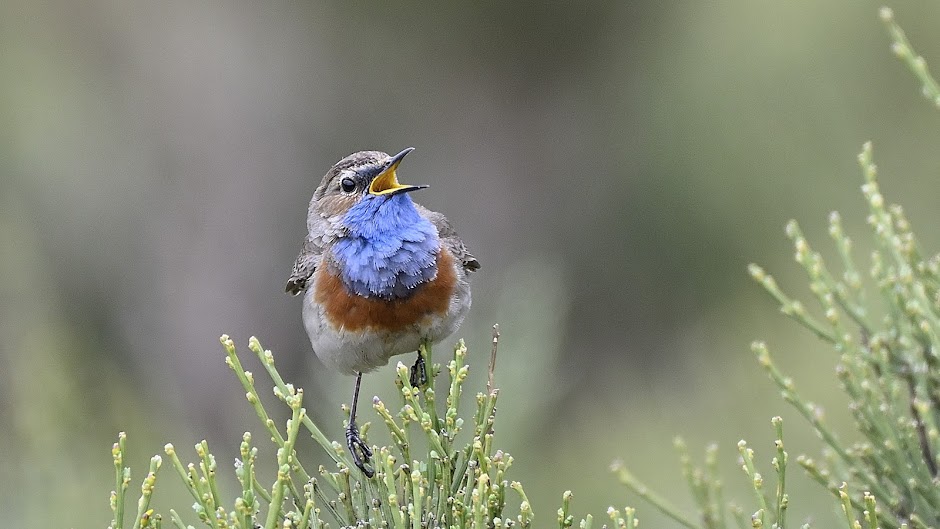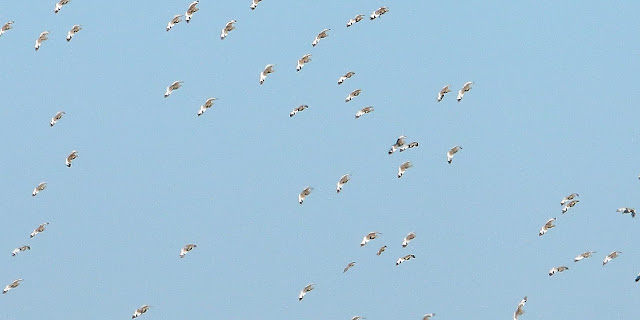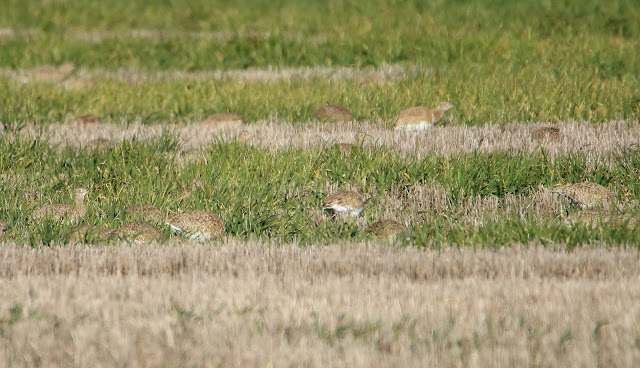En el siguiente enlace podéis ver nuestros próximos viajes nacionales y al extranjero y nuestra nueva web. Espero que os gusten ambas.
In the following link you can check our upcoming national and foreign trips and our new website. I hope you like them.
Próximos viajes. Next trips.
Esta entrada es sobre un viaje a la carta que realicé hace pocos días. El cliente deseaba ver águilas imperiales ibéricas (Aquila adalberti) y aves esteparias. Con esos objetivos le propuse una ruta que consistía en acudir temprano a la zona del suroeste de Madrid para luego desplazarnos hasta La Sagra, Toledo.
Próximos viajes. Next trips.
Esta entrada es sobre un viaje a la carta que realicé hace pocos días. El cliente deseaba ver águilas imperiales ibéricas (Aquila adalberti) y aves esteparias. Con esos objetivos le propuse una ruta que consistía en acudir temprano a la zona del suroeste de Madrid para luego desplazarnos hasta La Sagra, Toledo.
This post is about a trip À la Carte that I realized a few days ago. The client wanted to see Spanish Imperial Eagles and Steppe Birds. With these targets I proposed a route that consisted of going early to the Southwestern area of Madrid and then moving to La Sagra, Toledo.
Las previsiones meteorológicas eran buenas, mucho sol, pero estábamos en alerta por ola de frío y las previsiones se cumplieron pues llegamos a ver en el termómetro de la furgoneta -10º centígrados.
The weather forecast predicted a sunny day but we were on alert for a cold wave and the forecast were fulfilled as we got to see in the thermometer of the van -10 degrees centigrade.
La primera ave rapaz que vimos fue este buitre negro (Aegypius
monachus). A lo largo del recorrido vimos bastantes.
The first Bird of Prey we saw was this Black Vulture. Along the way we saw quite a few.
Otro.
Another one.
También abundaban los buitres leonados (Gyps
fulvus).
Griffon Vultures were also abundant.
A pesar del frío este manto bicolor (Lycaena phlaeas) estaba muy activo.
Despite cold this Small Copper was very active.
Zorzales charlos (Turdus
viscivorus).
Mistle
Thrushes.
Las águilas imperiales ibéricas (Aquila
adalberti) se hicieron de rogar y hasta medio día no vimos ninguna.
The Spanish Imperial Eagles did not want to show up and until noon we did not see any. This one was the first seen.
A este hembra le llevo viendo muchos años por esta zona a pesar de que no debe ser fácil cazar con esa falta de plumas en su ala izquierda.
I have seen this female for many years in this area although it should not be easy to hunt with that lack of feathers in his left wing.
Reyezuelo listado (Regulus
ignicapillus).
Firecrest.
Otra águila imperial ibérica (Aquila adalberti).
Another Spanish Imperial Eagle.
Al llegar a La Sagra vimos un grupo de unos 20 chorlitos dorados europeos (Pluvialis
apricaria) aunque en la foto solo se ven tres de ellos.
When arriving at La Sagra we saw a group of about 20 European Golden Plovers although in the photo only three of them are seen.
Perdiz roja (Alectoris
rufa). Enseguida pudimos apreciar que había muy mala visibilidad que me imagino que se debía al frío reinante.
Red-legged
Partridge. At once we could see that there was very poor visibility that I imagine was due to the low temperatures.
Este fue el primer grupo de sisones comunes (Tetrax
tetrax) que vimos.
This was the first flock of Little Bustard we saw.
Como podéis apreciar era imposible ver nada con el telescopio terrestre. De todos modos calculo que el grupo sobrepasaba los 300 ejemplares.
As you can see it was impossible to observe anything with the telescope. Anyway I estimate that the group exceeded 300 specimens.
Cuando estábamos observando el grupo anterior, se unió a él este otro grupo que he contado y si no me he equivocado estaba compuesto por 340 sisones comunes (Tetrax tetrax) y dos gangas ibéricas (Pterocles
alchata).
While observing the previous flock, it joined this other one that I have counted and if I have not been wrong it was composed of 340 and two Pin-tailed Sandgrouse.
Al poco rato el inmenso grupo se espantó y se posó más cerca.
Soon the huge group was frightened and landed closer.
Fue imposible contarlos a todos pero estimamos que sobrepasaba los 500 ejemplares. De todos modos es un privilegio poder contemplar un grupo así.
It was impossible to count all but we estimate that they exceed 500 Little Bustards. Anyway it's a privilege to see such a group.
It's a shame that this wonderful Bird is on a clear decreasing population.
Algunos machos ya han comenzado a mudar su plumaje al nupcial.
Some males have already begun to moult into breeding plumage.
Alcaudón real meridional (Lanius
meridionalis).
Southern
Grey Shrike.
Avefría europea (Vanellus
vanellus).
Northern
Lapwing.
Abubilla común (Upupa
epops).
Eurasian
Hoopoe.
Mochuelo europeo (Athene
noctua).
Little
Owl.
Gorrión moruno (Passer
hispaniolensis).
Spanish
Sparrow.
Vimos varios grupos de avutardas comunes (Otis
tarda).
We saw several flocks of Great Bustards.
Y la caer al tarde regresamos a Madrid.
And in the afternoon we returned to Madrid.
Si queréis suscribiros a este blog de los viajes que hacemos pincha en el siguiente enlace: Suscribirse y haz clic en ¿ Quieres suscribirte a nuestro blog?
If you want to subscribe to this post about the trips we do, click on the following link: Susbcribe and click on: Do you want to subscribe to our blog?
Hasta pronto.
See you soon.



































